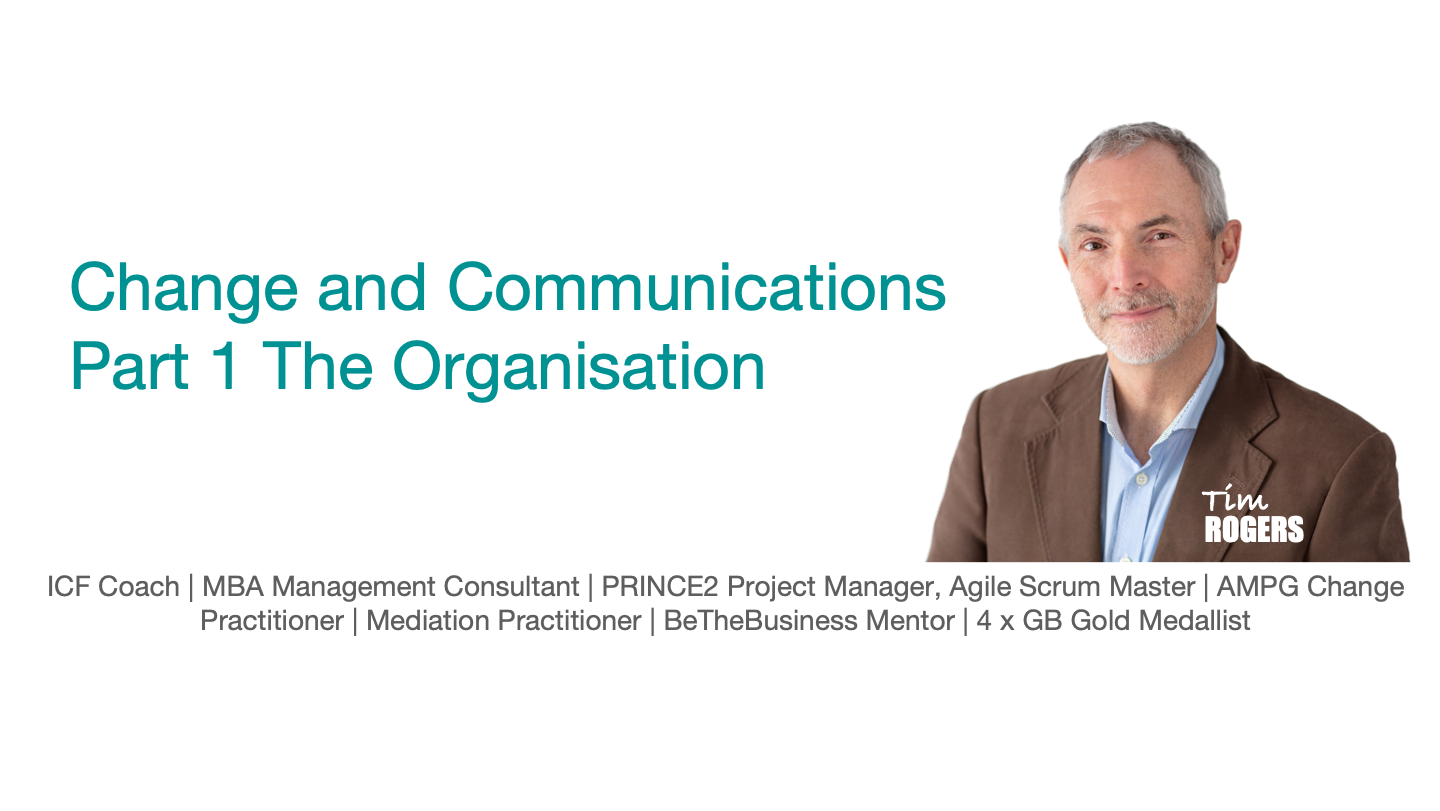
This is part one of a three-part series that examines change and communication models, starting with a macro perspective of the organization as a whole, then narrowing down to teams and individuals. Subsequently, it looks across other aspects such as leadership and psychological safety, exploring how these elements impact organizations, teams, and individuals. In reality, this forms a complex jigsaw of interrelationships. Therefore, it is not the case that one model holds universal truth. Instead, we must consider how all these different factors interact within what is truly a complex, adaptive system of change.
I’ve participated in several meetings recently focused on various aspects of change, such as communication styles, readiness, awareness, and processes. We also explored how to maintain strong relationships during periods of transition. For each meeting, I tailored different presentations to address the unique needs of each company. Although there are universal principles about change, every organization and team is distinct, influenced by the varied personalities within. Therefore, I collaborate closely with clients to develop bespoke materials that align with their specific circumstances and objectives. Here, I will share some standard models that I find particularly effective for discussing change management and communication styles.
McKinsey 7S Model
I find the McKinsey 7S Model invaluable for identifying the different elements involved in organizational change. It allows an organization to assess and align its strategy, structure, systems, shared values, skills, style, and staff, considering past, present, and future scenarios. This model is excellent for provoking awareness and providing a structured framework for change.
Bridges’ Transition Model
Bridges’ Transition Model is particularly useful for changes that involve moving from old ways to new ones, such as during mergers and acquisitions, technology upgrades, or new process implementations. This model excels at helping individuals and organizations understand the emotional and psychological transitions involved in letting go of the old and embracing the new.
Change House Model
The Change House Model is a simple yet effective tool for sparking discussion about where individuals or groups are in the change process. Whether someone is in the “Dungeon of Denial,” the “Room of Confusion,” or the “Balcony of Reflection,” each ‘room’ in the model represents a different mindset during change. It’s a vivid metaphor for understanding the varied experiences and emotional states that accompany change.
Kübler-Ross Change Curve
The Kübler-Ross Change Curve, originally developed to describe the grieving process, is also applicable to organizational change. It outlines the emotional journey people undergo when faced with change, including stages like denial, anger, bargaining, depression, and acceptance. This model helps in understanding the emotional aspects of change and is particularly useful for anticipating and addressing emotional responses.
ADKAR Model
The ADKAR Model by Prosci breaks change down into sequential steps: Awareness, Desire, Knowledge, Ability, and Reinforcement. This model is practical for planning and communicating change, providing clear steps to ensure successful change implementation.
Kotter’s 8-Step Process
Finally, Kotter’s 8-Step Process for Leading Change is a well-known framework that provides a step-by-step approach to implementing successful change. Although it may be considered overused, its familiarity can be an advantage as many are comfortable and confident in applying its steps.
In conclusion, while I’ve listed a number of models, it’s important to note that not all are used simultaneously for one organization. The choice of models depends on their relevance and fit for the specific audience and objectives of the change initiative. Each model has its strengths and limitations and serves as a tool to facilitate understanding and discussion, rather than a perfect blueprint.
Tim HJ Rogers
Consult | CoCreate | Deliver
I support people and teams to grow, perform and succeed unlocking potential as a partner Consultant, Coach, Project and Change Manager. Together we can deliver projects and change, and improve the confidence, capacity, drive and desire of the people I work with.
ICF Trained Coach | MBA Management Consultant | PRINCE2 Project Manager, Agile Scrum Master | AMPG Change Practitioner | Mediation Practitioner | BeTheBusiness Mentor | 4 x GB Gold Medalist | First Aid for Mental Health | Certificate in Applied Therapeutic Skills
#people #process #performance #projects #programmes #pmo #change #processimprovement #projectmanagement #changemanagement #workshops #mediation #coach #icfcoach #mentor #facilitation #training #jersey #channelislands
